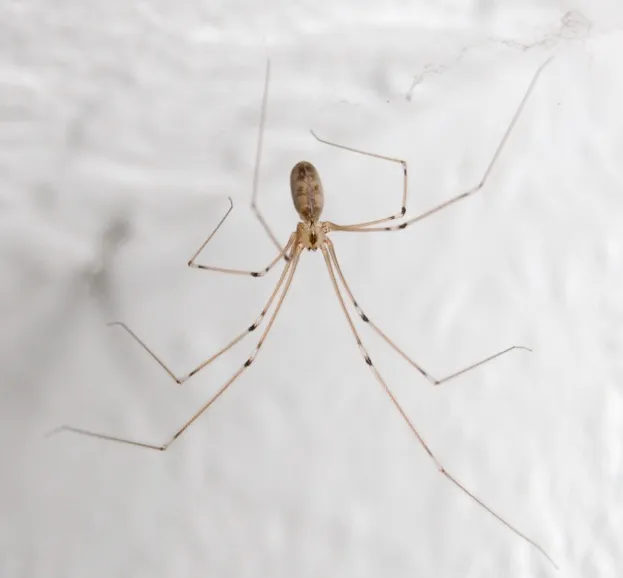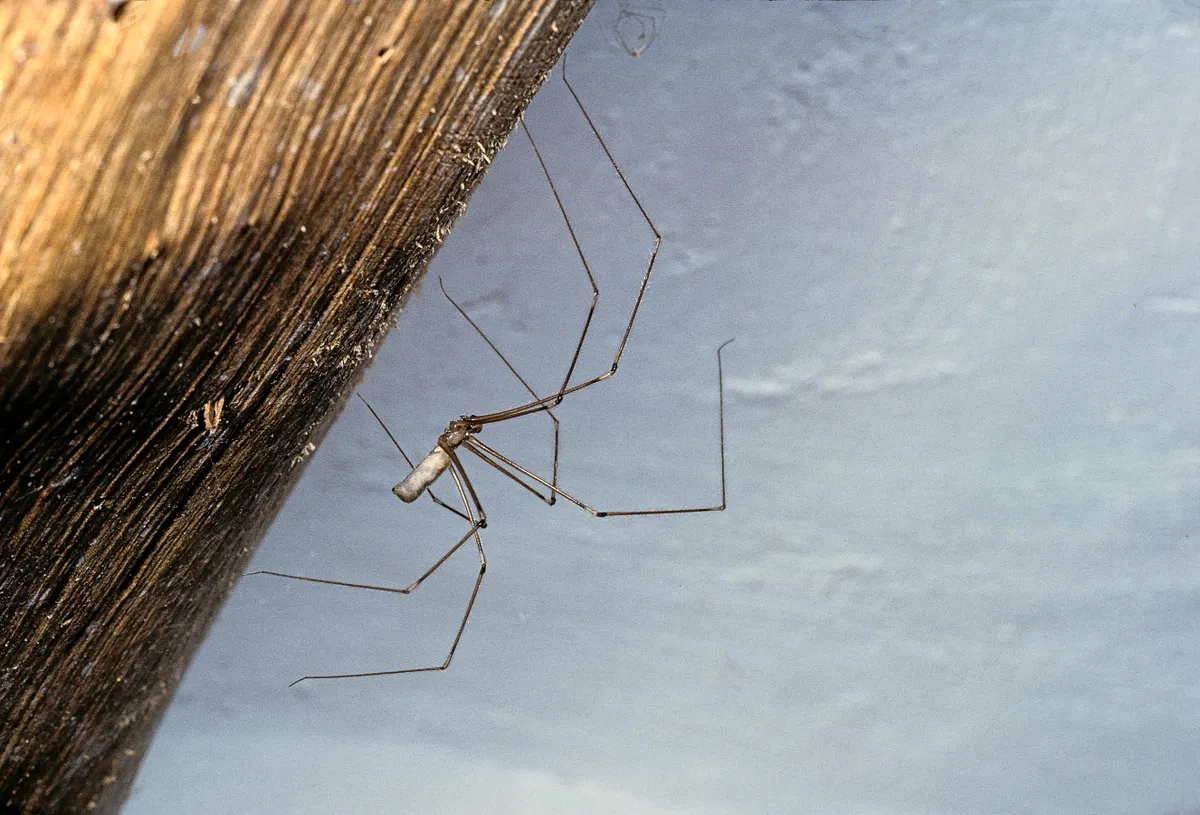1
Other names for pholcid spiders
Pholcid spiders are also known as cellar spiders or daddy long-legs spiders which is very confusing as this name is also shared with harvestmen, which look like spiders, but are actually most closely related to either mites or scorpions in North America. The name daddy-long-legs in also given to craneflies that are the most common flies found in the UK. There must be something about long-legs which makes us think of our paternal figures as all three are well endowed in the leg department!
2
Are pholcid spiders venomous?
A common myth about daddy long-legs spiders is that they are the world’s most venomous animal but don’t have jaws to bite. This isn’t true at all. All spiders are venomous but Pholcid venom isn’t particularly strong. The venom isn’t harmful to humans and their jaws are too weak to pierce through human skin. To other invertebrates however, they are the top of the food chain.
3
What do pholcid spiders eat?
Although they look like delicate beings, they definitely punch above their weight when it comes to their eating habits. These spiders are the natural enemy of the large house spiders seen running around your home. Not a fussy eater, the Pholcid spider will also feed on flies, bees, wasps and even other Pholcids when food is scarce. Cannibalism can be common in the natural world.
Not just content with waiting for food to land in its own web, the Pholcid spider will visit the webs of other spiders and eat the occupants! It’s pretty sneaky about it too. It will vibrate on the web, pretending to be a helpless insect tangled in the silk until the unsuspecting spider leaps out expecting an easy meal and ends up as dinner itself!

4
Pholcid spider webs
This fragile-looking little spider can often be seen lurking in the corners of households in their messy webs. Unusually for a spider, the web isn’t sticky at all. The complicated structure traps its prey, making escape difficult and allowing the spider to quickly cover their dinner in silk and delivering the fatal bite to its victim.
5
Why are long legs useful for a spider?
The Pholcid spider can be easily recognised by their small body and extremely long legs. Having long limbs is useful for this spider. It throws silk with its back legs at its (sometimes significantly larger) prey, stays safely out of harm’s way and covers its victim in a sticky web until it is immobilised.

6
How do pholcid spiders defend themselves from predators?
During the day, they’re fairly innocuous, remaining perfectly still whilst waiting for an unsuspecting titbit to land on their web. However when disturbed, they have an unusual defence mechanism, violently vibrating their web to blur their outline and scare away any would-be attackers.
7
Is having spiders in your house a good thing?
The beauty of having Pholcids in your home is knowing that they help keep everything in balance. While they do feed on house spiders, both spider species are essential for keeping down pests in the home. Flies which can transmit gastrointestinal infections are kept in check and your house is actually cleaner for allowing spiders to live there peacefully.
We've got loads of spider articles for all you arachnophiles out there. Take a look at these for a start:
Everything you need to know about spiders
9 UK household spiders and webs for you to spot
7 amazing zebra jumping spider facts
Photo © sssss1gmel/Getty
Buglife is the only organisation in Europe devoted to the conservation of all invertebrates. The trust is actively working to save Britain’s rarest little animals, everything from bees to beetles, worms to woodlice and jumping spiders to jellyfish.
Find out more about the amazing world of spiders.
